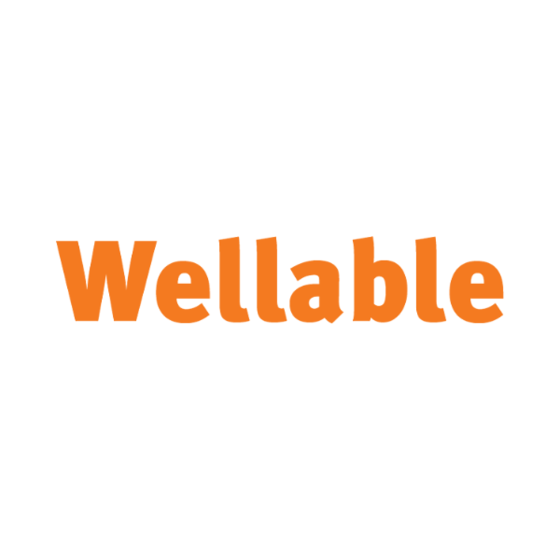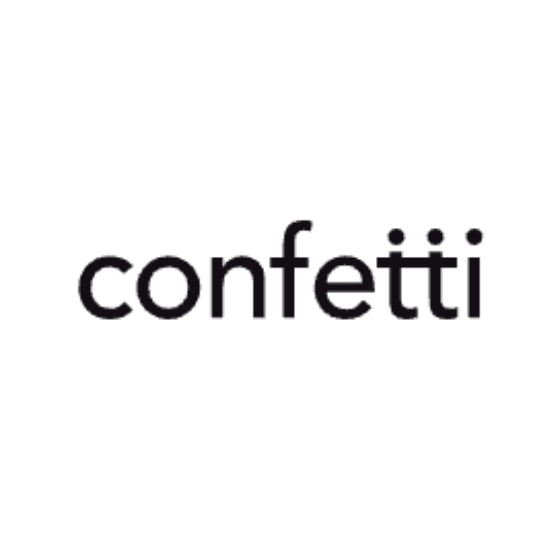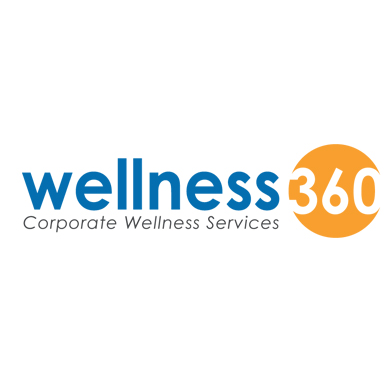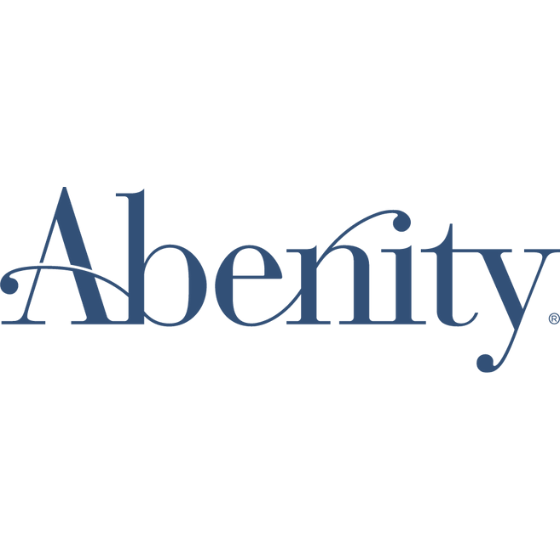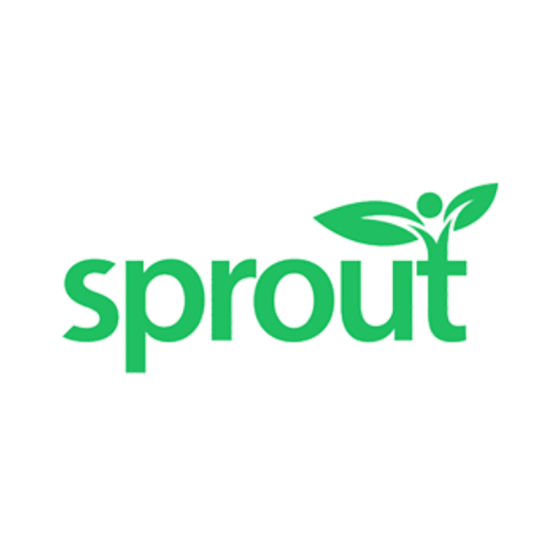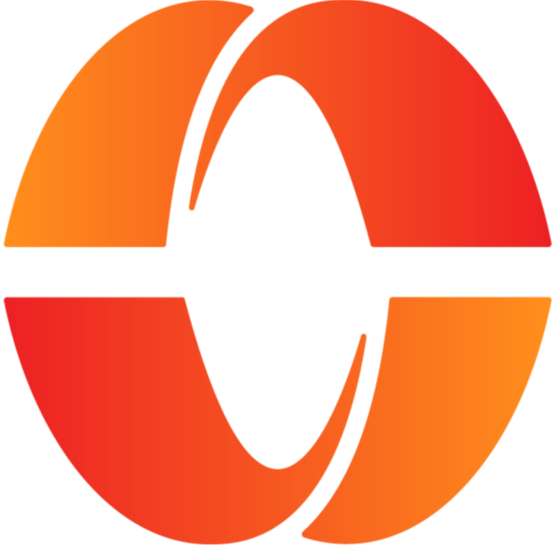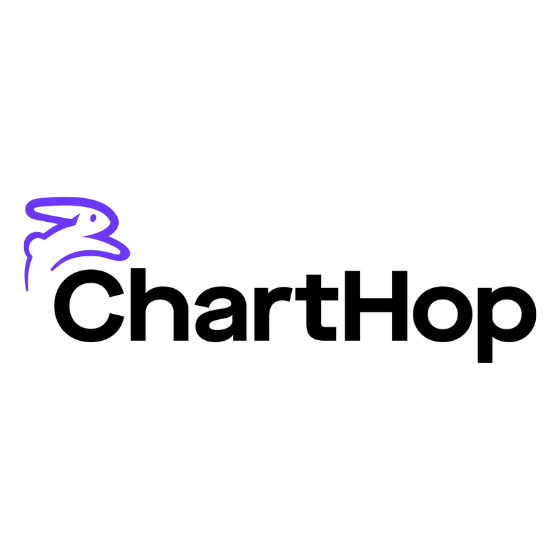10 Best Employee Wellness Software Shortlist
Here's my pick of the 10 best software from the 20 tools reviewed.
Are you looking for a fun way to improve the health of your workforce and support your employee's emotional well-being? Employee wellness software is ready to assist you. These tools, platforms, and apps can help your employees focus on their physical, mental, and emotional well-being, while positively impacting improve morale and productivity. However, with many different options out there, finding the best fit for your team is time-consuming.
In this article, I'll help you make your choice easier by sharing my insights on the best employee wellness software to improve the health and well-being of your staff. I'll help you speed up your selection process so you can find the best option that satisfies your needs.
Why Trust Our HR Software Reviews
We’ve been testing and reviewing HR software since 2019. As HR professionals ourselves, we know how critical and difficult it is to make the right decision when selecting software.
We invest in deep research to help our audience make better software purchasing decisions. We’ve tested more than 2,000 tools for different HR use cases and written over 1,000 comprehensive software reviews. Learn how we stay transparent, and take a look at our software review methodology.
Best Employee Wellness Software: Pricing Comparison Chart
This comparison chart summarizes pricing details for my top employee wellness software selections to help you find the best software for your budget and business needs.
| Tool | Best For | Trial Info | Price | ||
|---|---|---|---|---|---|
| 1 | Best for holistic employee wellness | Free demo available | From $100/month (25 user minimum) | Website | |
| 2 | Best for diverse wellness challenges | Not available | From $0.25/user/month | Website | |
| 3 | Best for engaging live-hosted events | Pay as you go plan available | From $2500 | Website | |
| 4 | Best for health data management | Free trial upon request | From $2/user/month | Website | |
| 5 | Best for tailored wellness journeys | Not available | Pricing upon request | Website | |
| 6 | Best for workforce mental health | Free demo available | Pricing upon request | Website | |
| 7 | Best for alleviating financial stress | Free trial + free demo | $450/month | Website | |
| 8 | Best for enhancing pharmacy benefits | 14-day free trial | Pricing upon request | Website | |
| 9 | Best for gamified wellness | Free demo available | Pricing upon request | Website | |
| 10 | Best for online cognitive behavioral therapy | Not available | Pricing upon request | Website |
-

Rippling
Visit WebsiteThis is an aggregated rating for this tool including ratings from Crozdesk users and ratings from other sites.4.8 -

Paylocity
Visit WebsiteThis is an aggregated rating for this tool including ratings from Crozdesk users and ratings from other sites.4.5 -

ChartHop
Visit WebsiteThis is an aggregated rating for this tool including ratings from Crozdesk users and ratings from other sites.4.3
Best Employee Wellness Software Reviews
Below are my reviews of each employee wellness software that showcases each system’s best use cases, and noteworthy features. I’ve also included a screenshot of each to give you a preview of their user interface (UI) too.
Wellable is an all-in-one wellness platform that supports your employees' health through engaging wellness challenges and continuous wellness programs. With Wellable, you can deliver wellness content via emails, push notifications, and texts, while gamification features make participation fun and competitive.
Why I Picked Wellable: I chose Wellable because it offers a vast range of educational wellness content for more holistic employee wellness, from mental health resources like meditation apps to financial wellness programs with budgeting tools. The platform provides tailored support for various life stages, such as parenting and retirement planning. Unique activities like on-demand fitness and mindfulness classes, holistic wellness coaching, and educational seminars also enhance its offerings.
Standout Features and Integrations:
Features include advanced analytics, which provide insights into engagement metrics and health outcomes, helping you refine your wellness strategies. The platform also offers flexible rewards options like Tango gift cards and Lifestyle Spending Accounts (LSA) through ThrivePass, allowing your employees to personalize their wellness journey.
Integrations include Fitbit, Garmin, Apple Health, Google Fit, Strava, MyFitnessPal, MapMyRun, Charity Miles, Runkeeper, Withings, Misfit, and Moves.
Pros and cons
Pros:
- Offers a wide range of wellness challenges and programs
- Provides personalized health coaching and resources
- Includes flexible rewards options like gift cards and custom rewards
Cons:
- Limited customization options for certain wellness challenges
- Requires consistent engagement to maximize benefits
YuMuuv is a wellness challenge app designed to boost employee engagement and well-being through various interactive challenges. It's a platform that helps organizations foster a healthier work culture by encouraging employees to stay active and mindful.
Why I Picked YuMuuv: I picked YuMuuv because it offers a diverse range of wellness challenges, from steps and yoga to mindfulness and hydration, which cater to diverse employee needs. These challenges not only promote physical activity but also encourage mental well-being, making it a holistic wellness solution. Additionally, the platform's ability to host unlimited challenges allows companies to continuously engage their teams without restrictions.
Standout Features and Integrations
Features include detailed analytics that give you insights into participation and engagement, helping you understand what works best for your team. With features like team management tools and integrated chat, it keeps everyone connected and motivated, regardless of where they are.
Integrations include Apple Health, Google Fit, Garmin, Fitbit, Polar, Suunto, Health Connect, Android, iPhone, Apple Watch, and Wear OS by Google.
Pros and cons
Pros:
- Variety of wellness challenges
- Designed to accommodate remote and multi-location teams
- Provides real-time tracking and updates
Cons:
- Issues with the app's syncing capabilities with certain devices
- Desire for more advanced wellness features
Confetti is an employee wellness platform offering virtual team-building, wellness classes, and inclusive workplace events. By combining fitness, mindfulness, and diversity initiatives with live-hosted activities, the platform helps you create meaningful connections across your workforce, especially in remote or hybrid settings.
Why I Picked Confetti: I picked Confetti because it combines traditional wellness programs like yoga and mindfulness with interactive experiences led by expert live hosts. This approach makes events both engaging and memorable while supporting mental and physical well-being. I also like how the platform includes learning and development workshops, such as soft skills training, that add another dimension to employee growth. Together, these elements make Confetti a well-rounded choice for organizations that want to strengthen both individual wellness and company culture.
Standout Features and Integrations
Features include seasonal celebrations that bring your team together around holidays or milestones, onboarding programs that help new hires feel welcomed, and diversity, equity, and inclusion (DEI) initiatives that foster belonging in the workplace. Confetti also provides a dedicated support team and ultra-simple planning tools, making it easy to organize events quickly.
Integrations include Zapier, Salesforce, HubSpot, Slack, Microsoft Teams, Zendesk, Google Sheets, Gmail, Google Calendar, Mailchimp, Zoom, and Microsoft Dynamics CRM.
Pros and cons
Pros:
- Wide catalog of seasonal and DEI-focused programs
- Dedicated planning support simplifies event setup
- Live-hosted events keep participants engaged
Cons:
- Customization options may be restricted for certain activities
- Limited options for in-person events
Woliba is an employee management platform that focuses on enhancing workplace wellness, engagement, and recognition. It offers a range of features designed to create a thriving workplace culture and improve employee experiences.
Why I Picked Woliba: One of the reasons I picked Woliba is its wellness challenges feature, which promotes team bonding and healthy competition among employees. Additionally, Woliba provides wellness resources that include educational content to support healthy habits and work-life balance, helping you and your team maintain a healthier lifestyle. I also like Woliba's health data management capability, which provides actionable insights into employee health trends, allowing you to make informed decisions about wellness initiatives and tailor them to meet the unique needs of your team.
Standout Features and Integrations
Features include coaching and wellness events, which offer expert guidance to improve employee productivity and engagement. Engagement surveys are another valuable feature, as they collect real-time feedback from your team to inform decision-making and enhance workplace satisfaction. It also offers a rewards management system that motivates healthy behaviors.
Integrations include Slack, Google Calendar, Microsoft Outlook, Strava, Google Fit, Fitbit, and Apple Health Kit.
Pros and cons
Pros:
- Comprehensive wellness and engagement
- Range of programs and challenges
- User-friendly, intuitive interface
Cons:
- Integration issues with devices
- Could offer more customization options
Wellness360 is an employee wellness software that focuses on enhancing your team's well-being through a variety of digital programming and engagement tools. It takes a holistic approach by addressing physical, nutritional, mental, social, and financial aspects of health.
Why I Picked Wellness360: I chose Wellness360 because of its tailored features that drive engagement and behavioral change. The platform offers interactive wellness challenges, health coaching, and a diverse library of on-demand workout videos created by certified instructors. It also provides tailored content and resources aligned with individual wellness journeys, ensuring that every employee can find the support they need to improve their well-being.
Standout Features and Integrations:
Features include social and gamified elements like team challenges and rewards for participation, which make the wellness journey enjoyable and motivating. Additionally, the software's detailed reporting and analytics provide valuable insights into employee health trends and program effectiveness.
Integrations include ADP, Workday, SAP SuccessFactors, Ceridian, UKG, Oracle, Microsoft Teams, Slack, Zoom, Fitbit, Garmin, and Apple Health.
Pros and cons
Pros:
- Engaging challenges and rewards
- Wide range of integrations
- Gamified user experience
Cons:
- Occasional issues with device connections
- No access to wellness coaches
Headversity is a unique platform dedicated to enhancing workforce mental health through continuous practice and skill measurement. It provides tools that help you and your team build healthy habits in mental fitness and psychological safety, and apply these skills in daily work, leading to a more supportive workplace and fewer claims.
Why I Picked Headversity: I chose Headversity because it offers micro-learning experiences that empower employees to proactively build resilience skills. Its integration of pedagogy, psychotherapy, and motivational science supports a culture of mental well-being, helping your team grow together. The focus on ongoing skill measurement ensures that the learning is not just theoretical but is applied in real workplace scenarios.
Standout Features and Integrations:
Features include personalized, engaging experiences that foster sustainable behavior change, interactive sessions that can be conducted both in-person and remotely, and actionable insights for leaders to improve team engagement and performance.
Integrations include Slack, Microsoft Teams, Zoom, Workday, SAP SuccessFactors, Oracle, Google Workspace, Salesforce, BambooHR, LinkedIn Learning, ADP, and Asana.
Pros and cons
Pros:
- Proactive training and resources for mental health improvement
- Encourages daily mental health practices to prevent burnout
- Offers personalized experiences for sustainable behavior change
Cons:
- Limited language support, primarily English
- Initial onboarding and implementation can be time-consuming
Abenity is an employee perks program offering real discounts and savings that benefit both organizations and their employees. With its extensive network of discounts, Abenity aims to enhance employee wellness by providing financial relief and access to exclusive offers.
Why I Picked Abenity: One of the reasons I picked Abenity is its vast marketplace for voluntary benefits, which includes local and national discounts. This feature allows you and your team to save on everyday expenses across more than 10,000 cities. By offering such widespread savings, Abenity helps alleviate financial stress, a key component of employee wellness. Additionally, Abenity provides complete control over branding and performance tracking, so you can tailor the perks program to fit your organization's unique needs.
Standout Features and Integrations:
Features include a gated marketplace offering exclusive corporate rates, which ensures the discounts are both valuable and convenient. The platform also offers flexible enrollment options and direct account support, making it easy to implement and manage, contributing to a more productive and satisfied workforce.
Integrations are available with your existing systems through Abenity's Perks API.
Pros and cons
Pros:
- Offers a wide range of discounts and deals
- Regular updates are provided on new offers
- The platform is accessible via mobile devices
Cons:
- May have limited availability of local deals
- Limited international options outside of the United States
myDrugCosts is a pharmacy benefit solution designed to help you and your team save on prescription drugs by providing transparency in drug pricing and access to affordable medications. This platform supports employee wellness by engaging your team in their savings journey and enhancing employer communications around health and wellness initiatives.
Why I Picked myDrugCosts: I chose myDrugCosts because it empowers your team to make informed decisions about their prescription costs. One standout feature is the ability to access pharmacy coverage summaries, giving employees a clear view of their medication options and associated costs. Your team can also search for savings at national retail stores and online pharmacies, such as Mark Cuban Cost Plus Drugs, DiRx, and RxOutreach. This focus on savings and informed decision-making makes myDrugCosts a valuable tool for employee wellness.
Standout Features and Integrations:
Features include savings notifications and a comprehensive search for affordable medication options across numerous pharmacies. The platform also incentivizes employees to save on medications, rewarding them for account creation and savings.
Integrations include claims systems and national and online retail pharmacies.
Pros and cons
Pros:
- Offers transparency in drug pricing
- Provides access to affordable medications
- Incentivizes employees to save on prescriptions
Cons:
- Could offer more third-party integration options
- May not cover all medication options
Sprout is a health technology platform designed to support employers and global brands in enhancing their employee wellness programs. With tools for real-time health assessments and community engagement, it aims to foster a healthier workplace environment.
Why I Picked Sprout: I picked Sprout because it acts as a centralized hub for employee wellness, offering gamified challenges and goal-setting features. These elements encourage employees to engage in their wellness journeys, boosting productivity and fostering a positive work culture. Another reason Sprout stands out is its focus on analytics and reporting, which provide insights into employee health trends and the effectiveness of wellness programs.
Standout Features and Integrations:
Features include the Sprout open health API™, which allows larger organizations to capture and monetize health and lifestyle data. This modular toolkit also enhances existing technology stacks with health features, helping brands understand their customers and build loyalty. The platform's adaptability across various sectors makes it a versatile solution for diverse business needs.
Integrations include SSO and various wearable devices.
Pros and cons
Pros:
- Gamification tools for increased engagement
- Provides holistic health information and personalized recommendations
- Good communication tools
Cons:
- Some navigation difficulties for new users
- May not fully meet the needs of multinational companies
Starling is a digital mental health platform that delivers personalized, online cognitive behavioral therapy (CBT) to help employees manage stress, anxiety, and depression. Designed for both prevention and recovery, it supports individuals whether they're at work or on leave.
Why I Picked Starling: I chose Starling for its proactive approach to mental health through its Mental Fitness program. This program provides early intervention by helping employees build resilience before issues escalate. Features like the check-up tool track changes in energy, resilience, anxiety, and depression levels, offering insights into mental fitness. The mental fitness toolbox includes resources to set realistic goals, balance negative thoughts, and regulate emotions, promoting sustainable self-care practices.
Standout Features and Integrations:
Features include profession-specific support tailored to different job functions, a confidential peer support community to reduce stigma, and standardized reporting for employers to monitor usage and effectiveness.
Integrations are not currently available.
Pros and cons
Pros:
- Offers personalized CBT-based programs
- Supports a smooth return-to-work processes
- Offers profession-specific support
Cons:
- Limited information available on integrations
- Not ideal for individuals requiring other therapy modalities
Other Employee Wellness Software
Here are a few more worthwhile options that didn’t make my shortlist of the best corporate wellness software, but are still worth checking out:
- Unmind
Self-guided programs
- Limeade
For customizable wellness programs
- Headspace
For mobile accessibility
- Origin
For employee financial wellness
- Kona
For burnout prevention
- Calm
For mindfulness practices
- Terryberry
For mid-market organizations
- Vantage Fit
For global and remote teams
- Personify Health
For personalized approaches
- PerkUp
Mobile app-based engagement tool for wellness improvement
Related HR Software Reviews
If you still haven't found what you're looking for here, check out these other related tools that we've tested and evaluated:
- HR Software
- Payroll Software
- Recruiting Software
- Employer of Record Services
- Applicant Tracking Systems
- Workforce Management Software
Selection Criteria for Employee Wellness Software
Wondering how I selected the best employee wellness software for this list? I started out by creating a long list of corporate wellness software based on recent corporate wellness software market data. I then used the selection and evaluation criteria below to assess each platform in detail, to determine the clear winners in the pack.
Through hands-on testing and in-depth research, I assessed how well each system meets specific user needs, tackles common pain points, supports healthier routines, and boosts morale, all while enhancing team productivity.
Here’s a summary of the evaluation and selection criteria I used:
Core Functionalities (25% of total score): To be considered for inclusion in this list, each solution had to fulfill these common use cases first:
- Helping employees set and track wellness goals
- Facilitating mental health support and stress management
- Offering team challenges and social engagement
- Providing access to personalized health resources
- Integrating with other HR tools and platforms for seamless data flow
Additional Standout Features (25% of total score): To help me find the best software out of numerous available options, I also kept a keen eye out for unique features, including the following:
- Advanced mental health support, such as live virtual therapy sessions or mental wellness workshops
- Gamified challenges with customizable leaderboards for friendly competition
- Detailed sleep and nutrition tracking that adjusts recommendations based on user progress
- Real-time feedback and personalized recommendations using AI for a more tailored experience
- Community-based features, like wellness groups and peer support, to build morale and accountability
Usability (10% of total score): To evaluate the usability of each system, I considered the following:
- User-friendly dashboards with clear navigation and icons
- Mobile-responsive design for on-the-go wellness tracking
- Intuitive controls, like drag-and-drop goal-setting for easy personalization
- Visual aids, like progress bars and wellness milestones, that motivate ongoing use
Onboarding (10% of total score): To get a sense of each software provider's customer onboarding process, I considered the following factors:
- Interactive product tours and live training sessions to speed up user adoption
- Migration support for transferring any historical wellness data into the platform
- Access to training videos, templates, and webinars for continued learning
- Chatbot assistance for 24/7 onboarding support
Customer Support (10% of total score): To evaluate the level of customer support each vendor offered, I considered the following:
- Responsive live chat and email support for immediate troubleshooting
- Dedicated account managers to guide long-term wellness strategy
- In-app help center with self-service resources for on-demand learning
- Comprehensive FAQ and knowledge base for resolving common questions
Value for Price (10% of total score): To gauge the value of each software, I considered the following factors:
- Transparent pricing tiers that provide flexibility based on company size and wellness goals
- Discounts or customizable plans to fit specific budget constraints
- Value-based pricing that includes high-impact wellness features without extra add-ons
- Cost-efficient features that justify the investment in employee well-being
Customer Reviews (10% of total score): Evaluating customer reviews is the final element of my selection process, which helps me understand how well a product performs in the hands of real users. Here are the factors I considered:
- Consistently high ratings on usability, engagement, and support
- Positive feedback on key features like mental health support and goal-tracking
- Reports of high employee participation rates, indicating strong user adoption
- Long-term user feedback on the platform’s ability to impact well-being positively
Using this assessment framework helped me identify the software that goes beyond basic requirements to offer additional value through unique features, intuitive usability, smooth onboarding, effective support, and overall value for price.
What is Employee Wellness Software?
Employee wellness software is a digital tool that helps employees monitor and track their own physical and mental health. They include tools to monitor health metrics like physical activity, sleep, and nutrition, as well as additional resources to support mental health challenges such as stress, anxiety, or depression. The software often includes engagement features like challenges or rewards to keep employees motivated to participate, and tools to create personalized programs.
A well-chosen employee wellness platform can impact your bottom line in numerous ways. By improving the health of your workforce, your employees are less likely to get sick, reducing absenteeism due to illness, and increasing productivity. Improved health also leads to fewer medical expenses, leading to lower healthcare costs on your group benefits plan. In addition, promoting health and wellness within your workplace can boost employee morale and create a happier and healthier workplace culture that is attractive for new candidates.
Features of Employee Wellness Software
When selecting employee wellness software, I focus on tools that make it easier for employees to establish healthier routines, feel more connected, and maintain a balanced lifestyle. The right wellness platform goes beyond fitness programs, offering features that actively support well-being and engagement.
Here are the key features to look out for:
- Health Monitoring: Monitors and assesses the user’s health to formulate a personalized and customizable wellness plan. For more advanced wellness apps, this type of monitoring also covers biometric screening for key details like heart rate and blood pressure.
- Personalized Wellness Plans: Tailored wellness programs give employees the flexibility to work toward personal health goals, which helps them engage more deeply and feel supported in their unique wellness journeys.
- Mental Health Resources: Access to mental health tools, like therapy sessions or meditation guides, is essential for managing stress and building resilience, which contributes to a more balanced and motivated team.
- Activity and Fitness Tracking: Integrating activity tracking encourages employees to build daily habits that support their physical health, leading to improved energy and focus in their work.
- Stress Management Tools: Programs that offer stress management resources, like breathing exercises or relaxation techniques, help employees manage pressure, which in turn supports morale and mental clarity.
- Content Library: This may come in the form of a database of videos and articles that can help users in their wellness journey or links to other in-house resources from your human resources department.
- Nutrition and Sleep Support: Resources that promote healthy eating and sleep practices help employees maintain routines that contribute to their overall well-being, so they can approach their work with more energy and focus.
- Social and Community Features: Built-in social features like wellness groups or community boards create a sense of connection and accountability, which supports morale and helps employees feel more engaged with the program.
- Team Challenges and Leaderboards: Friendly wellness challenges foster camaraderie and a spirit of motivation within teams, encouraging employees to strive toward goals together while building morale.
- Gamification: This involves the use of social and gamification elements to stimulate engagement and motivation (think: like the Apple Watch’s “exercise ring”). Gamification can go a long way toward incorporating healthy behaviors into your workplace culture.
- Rewards and Incentives: To really promote user engagement, the best employee wellness platforms provide users with incentives like gift cards and badges for reaching wellness milestones or achievements. These help reinforce positive behavior and keep wellness top of mind.
By choosing software that prioritizes these aspects, you’re not only investing in your team’s morale and balance but also fostering a more productive and motivated workplace.
Costs & Pricing for Employee Wellness Software
Employee wellness software typically offers a range of plans to meet support different company sizes, from free or entry-level options to comprehensive packages for large organizations.
To help you get a better idea of the price ranges to expect, I've compiled common pricing details into the table below. Each plan includes a set of core wellness tools like fitness tracking, mental health support, and basic reporting, with more advanced options such as coaching, personalized analytics, and integration capabilities in more extensive plans.
Plan Comparison Table for Employee Wellness Software
| Plan | Price Per Month | Summary | Features |
|---|---|---|---|
| Free | $0 | Basic wellness tools for small teams | Activity tracking, step challenges, limited content library, and mobile access |
| Starter | $3 - $5 per user | Essential wellness tools for small teams | Fitness tracking, mental health resources, wellness tips, team challenges, and progress tracking |
| Standard | $6 - $10 per user | Core wellness features for mid-sized teams | Fitness and nutrition tracking, customizable goals, stress management, team challenges, and reporting |
| Premium | $11 - $15 per user | Advanced tools and analytics | All Standard features, personalized wellness plans, advanced mental health resources, custom reports, and API integration |
| Enterprise | Custom pricing | Fully customizable for large organizations | All Premium features, dedicated account manager, coaching options, API and HR integration, real-time analytics, and custom branding |
The best plan depends on your organization’s size, budget, and specific wellness goals. Smaller teams can start with the Free or Starter plans, while larger organizations needing advanced insights and customization may find value in Premium or Enterprise plans.
Frequently Asked Questions About Employee Wellness Software
Still wondering about employee wellness software and how they can improve your workplace culture? These answers to frequently asked questions are a great place to start:
What is an employee wellness program?
An employee wellness program is a corporate initiative that can help employees improve their health, increase their level of daily physical activity, and overcome health-related issues. To learn more about wellness programs and view some examples, check out our 10 favorite employee wellness program ideas that we are loving this year.
Why are workplace wellness programs important?
Employee wellness programs are an important part of promoting a positive work-life balance within your organization. According to a Mental Health America study, 9/10 employees reported that workplace stress affects their mental health, leading to reduced efficiency and service delivery. By promoting and incentivizing healthy behaviors within your workforce, you’ll set a better example and be seen as a more proactive employer in the eyes of your employees. When employees feel they are genuinely cared for, they’ll be more motivated to go the extra mile for their employer too.
Do workplace wellness programs work?
Yes, wellness programs work and can help employees overcome stress and anxiety. Wellness programs help reduce absenteeism by making the office livelier and more engaging. Ot convince. Check out these stats:
- 77% of employers participating in wellness programs rated them as “very” or “moderately” effective.
- Employees with corporate wellness program access are 8.3-13.6% more likely to engage in regular physical exercise than those who are not.
- 81% of large companies (200+ employees) offered some type of wellness program in 2020, up from 70% in 2008.
Like anything, you can expect to get out what you put in when it comes to employee wellness programs. Companies that invest in them may see higher levels of productivity, happier employees, and less spending on corporate health plans in the long run.
Other Software Reviews for a Better Workplace Culture
While corporate wellness software can go a long way toward instilling a healthy lifestyle in your employees, there are other types of software that can help you improve your workplace culture too. Here are a few links to other software reviews, to point you in the right direction:
- Benefits Administration Software
- Employee Engagement Software
- Employee Perks Programs to Automate Rewards
- Employee Recognition Platforms for Celebrating Top Talent
- Employee Experience Software for Engagement & Performance
The Future of Workplace Wellness Programs
Work-related stress is one of the most common reasons for burnout and absenteeism. A wellness program can help employees become healthier. It can help them overcome stress and foster camaraderie with other employees. If you don’t have one yet, now is the perfect time to implement employee wellness software for your company.
If you want to learn more about software that can help your business grow, subscribe to People Managing People today.
Related read: Best Employee Monitoring Software


